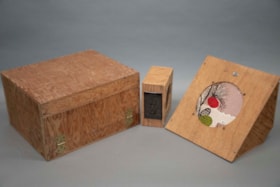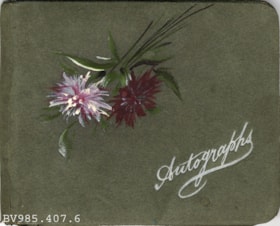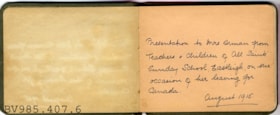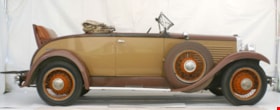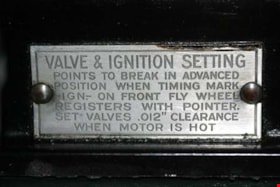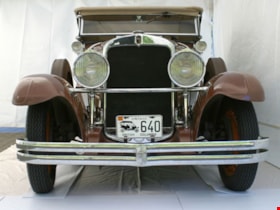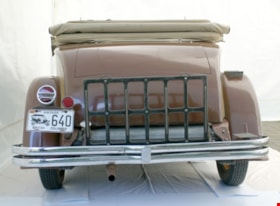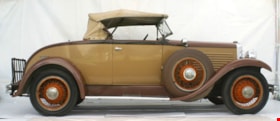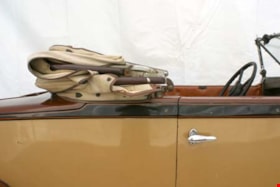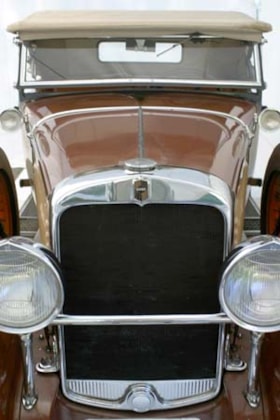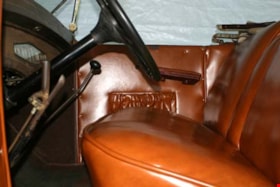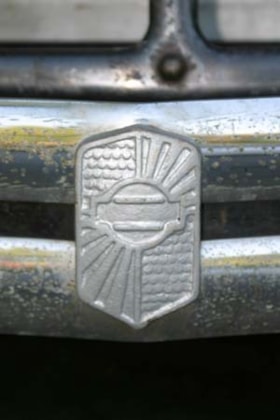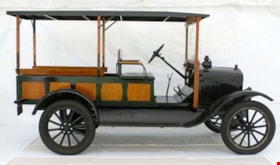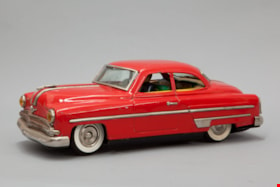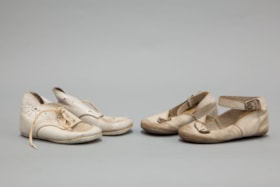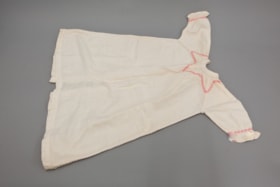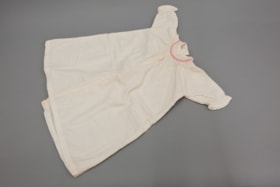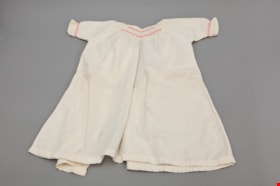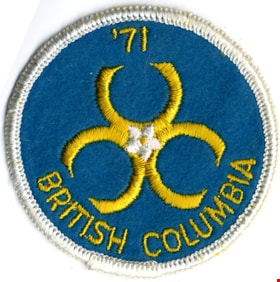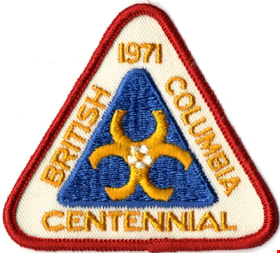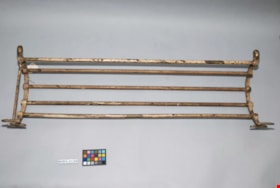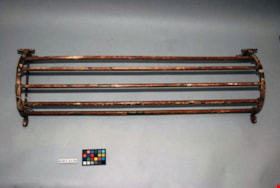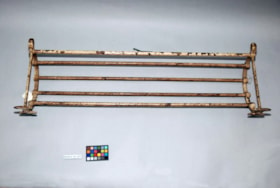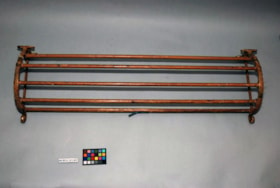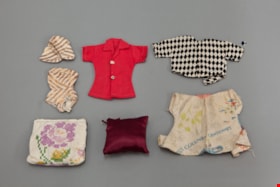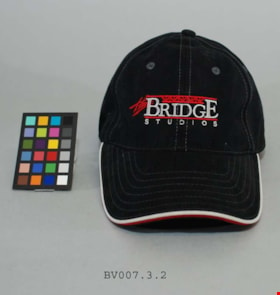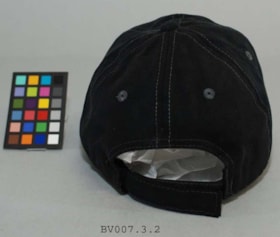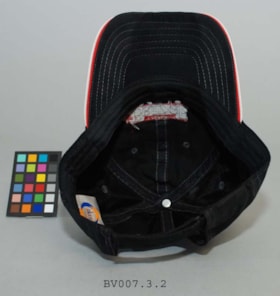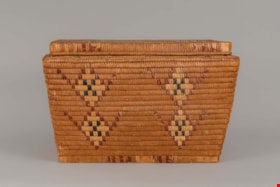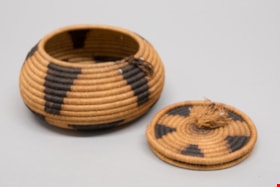Narrow Results By
Creator
- British Columbia Hydro and Power Authority 1
- Burnaby Centennial '71 Committee 1
- Burnaby Parks and Recreation Commission 1
- Burnaby Village Museum 10
- Burnett, David H. 1
- Buzza, Joy 4
- Century Park Museum Association 9
- Copan, Donald Angus "Don" 1
- Copan, Donald (Don) 1
- Hawkshaw, Mabel Edith Honor McClean 1
- Hill, Albert James 1
- Hopping Kovach Grinnell Design Consultants Limited 1
Person / Organization
- Air Raid Precautions (A.R.P.) 2
- Alpha Secondary School 3
- Bayntun, Charmaine "Sherrie" Yanko 5
- BC Society of Model Engineers (BCSME) 1
- B.C. Summer Games 1
- Boy Scouts of Canada 2
- Brentwood Merchants Association 1
- Brentwood Park School 1
- Bridge Studios 1
- British Columbia Corrections Service 3
- British Columbia Electric Railway Company 90
- British Columbia Ferry Services Incorporated 2
audio amplification set
https://search.heritageburnaby.ca/link/museumartifact91427
- Repository
- Burnaby Village Museum
- Accession Code
- BV021.22.1
- Description
- A large box containing a audio-amp, a wooden triangular prism with a decorative round speaker, and six smaller rectangular boxes. All are made of a light wood, and have different functions.
- Object History
- This audio-amplifier set was used by Mr. Edward A. Fountain, who was appointed as Civil Defense Coordinator on May 5th, 1952. He also built the wooden boxes which contain each part of the set. The Burnaby Civil Defense Department was established in order to disseminate information guiding the public on how to react in response to the impending threat of nuclear war and Russian bombers. In the early 1950’s, this education centered primarily on evacuation, as members of the public were expected to prepare and essentially fend for themselves in the event of a nuclear attack. These pieces of audio technology are believed to have been used at Civil Defense rallies in Burnaby, which Edward Fountain would have been involved in as the department director. According to Burnaby City Council meeting records, music and defense operation demonstrations were commonplace at such rallies, and are examples of what this set was used for.
- Classification
- Telecommunication T&E - - Telecommunication Devices
- Object Term
- Radio
- Colour
- Brown
- Country Made
- Canada
- Province Made
- British Columbia
- Site/City Made
- Burnaby
- Subjects
- Communication Artifacts
- Names
- Fountain, Edward
- Geographic Access
- Burnaby Lake
- Planning Study Area
- Windsor Area
Images
autograph book
https://search.heritageburnaby.ca/link/museumartifact7129
- Repository
- Burnaby Village Museum
- Accession Code
- BV985.407.6
- Description
- Autograph Book - Booklet -- [1915]. Autograph book produced by Rose & Co at 44 Above Bar, Southhampton. The book was a gift to Mrs. Orman from the Teachers and Children of All Saints Sunday School, Eastleigh, Southhampton, upon her departure to Canada. The first four pages lists all the teachers and children's names. The front cover of the book is green with two painted purple flowers and "Autographs" embossed in white on the bottom right.
- Object History
- This accession appears to be connected to the Orman family. Ada Leila Orman was born June 2, 1901 in Eastleigh, Hampshire, England. According to the 1915 Census, the Orman family came to Canada in 1911 and settled in Calgary. Father Willoughby Henry Orman is listed there as working as a C.P.R. foreman, while mother Daisy Marie (Harklett) Orman worked at home. Older sister Daisy Hilda (Targett) Orman, worked as a stenographer. At five years old Leila began a long fight with a crippling type of rheumatoid arthritis. By the time she was thirteen, she experienced completely ankylosed joints. Her family travelled all over hoping to find a cure, but to no avail. While living in Calgary, Leila developed an interest in painting, knitting, and composing her own poems. She began writing news articles for the Calgary Daily Herald in the 1930s, and her first sonnet published was in that paper on August 28, 1934. She had a strong interest in the arts, often writing about music and the visual arts. While living in Calgary, she became a member of the Business and Professional Women’s Club as well as a member of the Canadian Author’s Association. Three members of the family moved to B.C. when Willoughby retired, ca. 1938. In the 1940 BC Directory, the family are listed as living at 407 Campbell Street, Burnaby. Willoughby died in Burnaby in 1945. Daisy Marie died in 1955 after living 15 years in Burnaby. Her address at the time of her death is listed as 407 Rosewood Avenue, Burnaby. Leila was living with her at that time. Older sister Daisy Hilda married Edgar Harold Targett in 1922. They moved to B.C. from Alberta some years after the other three members of the family (ca. 1962). Daisy Hilda died in 1972. Her address at the time of her death was 7969 Rosewood Avenue, Burnaby. Leila wrote on a typewriter with two sticks to type out the letters. She was an avid reader and was able to turn the pages with a special stick with elastic bands wound around the ends. Canadian novelist Maida Parlow French became her lifelong friend and encouraged her to write her own autobiography - unfortunately it was never finished. Leila wrote “The Giving Heart” in October of 1948. By 1952, she was writing a column for the British Columbia Saturday Magazine entitled “Across the Board” with the intention of inspiring other “incapacitated folk” to live up to their full potential, “If [she] could reach a few people, and encourage them to reach up and out, [she] should feel the effort well worthwhile.” A member of the St. Alban’s Prayer Healing Fellowship group, Leila wrote the “Christian Manifesto for World Peace” in 1963. The Prayer Group met twice monthly at one of the members’ homes and undertook to pray daily for the sick and for world peace. After Leila’s mother died in 1955, Leila’s friend Jeanie Brown kept house for her and was her constant companion. Jeanie Brown and Leila lived together for over thirteen years until an accident sent Leila to hospital and later to nursing home where she died on February 16, 1976.
Images
automobile
https://search.heritageburnaby.ca/link/museumartifact35075
- Repository
- Burnaby Village Museum
- Accession Code
- BV993.19.1
- Description
- 1929 Nash Roadster, two door convertible with rumble seat. Body colour is two-tone, tan and brown. Wheels are wire spoke, mounting 29 in. X 5.5 in. tube tires. There are spare tires mounted on rims. These are located forward of the side doors. All the wheels have hubcaps. There are no side curtains. The engine is six cylinder with a "Twin Ignition" system. There are two sparkplugs per cylinder.
- Object History
- The Nash roadster was purchased by a private owner in British Columbia after it came out in 1929. In the late 1950s or 1960s the car was purchased from the first owner by William "Graham" Kidd (1922-1984) of Burnaby. The well loved vehicle was nicknamed "Agnes" by it's second owner Graham Kidd. Graham Kidd was the son of William Kidd Sr. (1882-1970) and Helen Kelly Kidd (1894-1977). Graham Kidd was born in Burnaby in 1922 and lived in Burnaby his whole life. Graham's father William Kidd and his mother Helen White Kelly married in North Burnaby in 1917 and moved into a home on Oxford Street. William Kidd opened a hardware store on East Hastings Street Burnaby in 1913 and operated it for twenty years before working for Burrard Brokerage in the 1930s. William and Helen had three children; William Graham Kidd, Margaret Graham "Peggy" (McLaughlin) and Ann (Mercier). In the late 1940s, Graham joined his father William Kidd working for Burrard Brokerage eventually becoming the proprietor of the business in the 1950s. Graham Kidd married Gweneth "Gwen" Anderson and lived in North Burnaby with their three children until he died in 1984. Graham Kidd loved his Nash automobile often going for Sunday drives with the convertible top down with children riding in the rumble seat. Parts for the automobile were hard to come by and the family recalls a neighbour Oscar Johnson helped to keep it in good condition. In the 1970s the Nash roadster was also refurbished and repainted with help from Graham Kidd's neighbour John Prestas. In 1984, after William Kidd died, Gwen Kidd donated the automobile to the Transportation Museum of British Columbia, Cloverdale who in turn donated it to Burnaby Village Museum in 1993.
- Classification
- Land Transportation T&E - - Motor Vehicles
- Object Term
- Automobile
- Marks/Labels
- "B33452", serial number
- "436", model number
- "80981", body number
- Maker
- Nash Motor Company
- Country Made
- United States of America
- Province Made
- Wisconsin
- Site/City Made
- Kenosha
Images
automobile
https://search.heritageburnaby.ca/link/museumartifact38527
- Repository
- Burnaby Village Museum
- Accession Code
- BV997.40.1
- Description
- This vehicle is a 1924 Ford Model T converted to a light delivery truck known as a "Depot Hack". The original body has been removed and an open wooden truck body has been custom built for the vehicle. The metal parts of the vehicle are painted black and the wood (mahogany?) is finished with a clear varnish. The radiator core is protected by a honeycombed front grill. The radiator cowling has the maker's brand stamped in the top. There is a white commercial license plate with red lettering mounted on right front of the dash, next to lamp. The vehicle has two electric front headlights and one rear light. It also has two incomplete carriage lamps screwed to the dash. There is one manual windshield wiper mounted on the vertical windshield. There is a horseshoe mounted on the right side inside of the dashboard. The "Buzz" coil box is mounted in the centre of the dash with a odometer on the left and key and meters on the right. The wheels have wood spokes and steel rims.
- Object History
- This 1924 Ford Model T vehicle may have arrived in Steveston around 1925 and used by a local family. The 1924 Ford Model T Depot Hack truck was built from the running gear of the original Model T Ford by Ernie Harrison. Ernie purchased the running gear of the Ford Model T around 1966 and built it from the ground up. Ernie took measurements from a "Depot Hack" that belonged to a collector in Vancouver and combed swap meets in British Columbia and Washington State in search of original car parts. Ernie belonged to the Model A and Model T Ford Club and took this truck in many parades. Around 1969, the truck was sold to a private collector before being sold to another collector in 1995. The vehicle was acquired by the Burnaby Village Museum in 1997. The Depot Hack rear body is not authentic but the original concept has been retained.
- Classification
- Land Transportation T&E - - Land Transportation Accessories
- Object Term
- Automobile
- Marks/Labels
- "Ford / MADE IN CANADA", embossed above grill on top of radiator cover "EXPRESS & DRAY" "1921" "487" "VANCOUVER, B.C.", embossed on license at front of vehicle. "Ford" is embossed on each running board
- Country Made
- Canada
- Province Made
- Ontario
- Site/City Made
- Windsor
Images
automobile
https://search.heritageburnaby.ca/link/museumartifact81964
- Repository
- Burnaby Village Museum
- Accession Code
- BV012.14.1
- Description
- Toy car - Made by Chiko - Japan in late 1950's. Pressed tinplate with a friction motor. The car is red with chrome accents, interior is green with pattern. Driver at wheel.
- Object History
- Used by Charmaine Yanko. It was a gift from Charmaine's uncle -- her dad's brother, Fred Yanko, who was less than a year younger than John Yanko. The Yanko family lived on Broadway in Burnaby. Annie D. Basiuk (later Yanko) was born on February 25, 1902 in Sheho, Saskatchewan (formerly Sheho, North West Territories). Daniel "Dan" Yanko was born in Kobilnicha, Ukraine in 1887 and immigrated to Canada in May or June of 1905. Daniel Yanko married Annie D. Basiuk and had thirteen children together. Their son, John Ivan Yanko was born on the family farm, near Kelliher, Saskatchewan, on June 27, 1923. In grade six, John was pulled out of school to help support the family. Eugenia “Jenny” Haresomovych (later Carman) was born August 8, 1904 in Galecia, Austria. She came to Canada in 1928, when her parents sent her to live with the Austrian consular in Halifax. A year later, she was in The Pas with Albert Edward Carman, with whom she would have three children. Their daughter, Leida Doria "Lillian Doris" Carman was born in The Pas, Manitoba March 24, 1929. Eugenia “Jenny” (Haresomovych) Carman later re-married Joseph Nagy who was born in Hungary in October 3, 1900. Jenny, Joseph and the children moved to Nelson, British Columbia, where Joseph worked for the Canadian Pacific Railway. At the age of twenty, John Yanko met his future wife Lillian Doris Carman while visiting relatives in Burnaby. Lillian received a rail pass because of her dad’s employment with the CPR and at fourteen had gone to visit her Godmother in Burnaby. John Ivan Yanko and Leida Doria "Lillian Doris" Carman were married October 16, 1948 in Nelson, British Columbia and moved into the basement of John’s sister’s house on Union Street. Lillian began working at the downtown Woodward’s store as a cashier in 1948. In 1950, the young couple bought property at 7385 (later renumbered 7391) Broadway in Burnaby and began constructing a house as they could afford it. Knowing she’d be let go if she was pregnant, when Lillian was expecting her first child, Jenny sewed her several versions of the same outfit; they all used the same material, but each was a little bit larger than the last to accommodate her expanding girth. Rhonda, born in 1953 and Charmaine, born in 1955, grew up in the Broadway home. They attended school at Sperling Elementary, and later at Burnaby North high school. Lillian left her job to be a stay-at-home mom when Rhonda was born, but that changed in 1963 when John and Charmaine were in a car accident that left John temporarily unable to work. Joseph Nagy died April 20, 1962; his wife Eugenia “Jenny” (Haresomovych) (Carman) Nagy passed away August 14, 1985. Daniel "Dan" Yanko died in 1976; his wife Annie D. (Basiuk) Yanko died in 1997. John Yanko later returned to work, establishing his own tile setting business and working until age eighty-two. John and Lillian lived out the rest of their married lives on the Broadway property. John Ivan Yanko passed away in 2010; his wife Leida Doria "Lillian Doris" Carman (Carman) Yanko passed away in 2011.
- Measurements
- Measures 12 cm. (h) x 35 cm (w) x 13 cm. (l)
- Maker
- Chiko
- Country Made
- Japan
- Subjects
- Toys
Images
baby shoes.
https://search.heritageburnaby.ca/link/museumartifact82529
- Repository
- Burnaby Village Museum
- Accession Code
- BV012.14.128
- Description
- White leather baby shoes made by "La Parisette", marked "HAND TURNED PROCESS" in insole, white mesh top, tongue and laces, design of small holes in leather.
- Object History
- From the Yanko family home in Burnaby. Annie D. Basiuk (later Yanko) was born on February 25, 1902 in Sheho, Saskatchewan (formerly Sheho, North West Territories). Daniel "Dan" Yanko was born in Kobilnicha, Ukraine in 1887 and immigrated to Canada in May or June of 1905. Daniel Yanko married Annie D. Basiuk and had thirteen children together. Their son, John Ivan Yanko was born on the family farm, near Kelliher, Saskatchewan, on June 27, 1923. In grade six, John was pulled out of school to help support the family. Eugenia “Jenny” Haresomovych (later Carman) was born August 8, 1904 in Galecia, Austria. She came to Canada in 1928, when her parents sent her to live with the Austrian consular in Halifax. A year later, she was in The Pas with Albert Edward Carman, with whom she would have three children. Their daughter, Leida Doria "Lillian Doris" Carman was born in The Pas, Manitoba March 24, 1929. Eugenia “Jenny” (Haresomovych) Carman later re-married Joseph Nagy who was born in Hungary in October 3, 1900. Jenny, Joseph and the children moved to Nelson, British Columbia, where Joseph worked for the Canadian Pacific Railway. At the age of twenty, John Yanko met his future wife Lillian Doris Carman while visiting relatives in Burnaby. Lillian received a rail pass because of her dad’s employment with the CPR and at fourteen had gone to visit her Godmother in Burnaby. John Ivan Yanko and Leida Doria "Lillian Doris" Carman were married October 16, 1948 in Nelson, British Columbia and moved into the basement of John’s sister’s house on Union Street. Lillian began working at the downtown Woodward’s store as a cashier in 1948. In 1950, the young couple bought property at 7385 (later renumbered 7391) Broadway in Burnaby and began constructing a house as they could afford it. Knowing she’d be let go if she was pregnant, when Lillian was expecting her first child, Jenny sewed her several versions of the same outfit; they all used the same material, but each was a little bit larger than the last to accommodate her expanding girth. Rhonda, born in 1953 and Charmaine, born in 1955, grew up in the Broadway home. They attended school at Sperling Elementary, and later at Burnaby North high school. Lillian left her job to be a stay-at-home mom when Rhonda was born, but that changed in 1963 when John and Charmaine were in a car accident that left John temporarily unable to work. Joseph Nagy died April 20, 1962; his wife Eugenia “Jenny” (Haresomovych) (Carman) Nagy passed away August 14, 1985. Daniel "Dan" Yanko died in 1976; his wife Annie D. (Basiuk) Yanko died in 1997. John Yanko later returned to work, establishing his own tile setting business and working until age eighty-two. John and Lillian lived out the rest of their married lives on the Broadway property. John Ivan Yanko passed away in 2010; his wife Leida Doria "Lillian Doris" Carman (Carman) Yanko passed away in 2011.
- Names
- Yanko Family
Images
baby shoes.
https://search.heritageburnaby.ca/link/museumartifact82532
- Repository
- Burnaby Village Museum
- Accession Code
- BV012.14.129
- Description
- White leather baby shoes made by "La Parisette", very worn, marked "HAND TURNED PROCESS" in insole, ankle strap with metal buckle and small bow on toe. Object is on the right side of the photograph.
- Object History
- From the Yanko family home in Burnaby. Annie D. Basiuk (later Yanko) was born on February 25, 1902 in Sheho, Saskatchewan (formerly Sheho, North West Territories). Daniel "Dan" Yanko was born in Kobilnicha, Ukraine in 1887 and immigrated to Canada in May or June of 1905. Daniel Yanko married Annie D. Basiuk and had thirteen children together. Their son, John Ivan Yanko was born on the family farm, near Kelliher, Saskatchewan, on June 27, 1923. In grade six, John was pulled out of school to help support the family. Eugenia “Jenny” Haresomovych (later Carman) was born August 8, 1904 in Galecia, Austria. She came to Canada in 1928, when her parents sent her to live with the Austrian consular in Halifax. A year later, she was in The Pas with Albert Edward Carman, with whom she would have three children. Their daughter, Leida Doria "Lillian Doris" Carman was born in The Pas, Manitoba March 24, 1929. Eugenia “Jenny” (Haresomovych) Carman later re-married Joseph Nagy who was born in Hungary in October 3, 1900. Jenny, Joseph and the children moved to Nelson, British Columbia, where Joseph worked for the Canadian Pacific Railway. At the age of twenty, John Yanko met his future wife Lillian Doris Carman while visiting relatives in Burnaby. Lillian received a rail pass because of her dad’s employment with the CPR and at fourteen had gone to visit her Godmother in Burnaby. John Ivan Yanko and Leida Doria "Lillian Doris" Carman were married October 16, 1948 in Nelson, British Columbia and moved into the basement of John’s sister’s house on Union Street. Lillian began working at the downtown Woodward’s store as a cashier in 1948. In 1950, the young couple bought property at 7385 (later renumbered 7391) Broadway in Burnaby and began constructing a house as they could afford it. Knowing she’d be let go if she was pregnant, when Lillian was expecting her first child, Jenny sewed her several versions of the same outfit; they all used the same material, but each was a little bit larger than the last to accommodate her expanding girth. Rhonda, born in 1953 and Charmaine, born in 1955, grew up in the Broadway home. They attended school at Sperling Elementary, and later at Burnaby North high school. Lillian left her job to be a stay-at-home mom when Rhonda was born, but that changed in 1963 when John and Charmaine were in a car accident that left John temporarily unable to work. Joseph Nagy died April 20, 1962; his wife Eugenia “Jenny” (Haresomovych) (Carman) Nagy passed away August 14, 1985. Daniel "Dan" Yanko died in 1976; his wife Annie D. (Basiuk) Yanko died in 1997. John Yanko later returned to work, establishing his own tile setting business and working until age eighty-two. John and Lillian lived out the rest of their married lives on the Broadway property. John Ivan Yanko passed away in 2010; his wife Leida Doria "Lillian Doris" Carman (Carman) Yanko passed away in 2011.
- Names
- Yanko Family
Images
baby sleeper.
https://search.heritageburnaby.ca/link/museumartifact82535
- Repository
- Burnaby Village Museum
- Accession Code
- BV012.14.130
- Description
- White cotton flannel homemade baby sleeper, white and pink rick-rack around neck in star design, pink rick-rack on sleeves, small rip has been repaired at front, missing buttons
- Object History
- From the Yanko family home in Burnaby. Annie D. Basiuk (later Yanko) was born on February 25, 1902 in Sheho, Saskatchewan (formerly Sheho, North West Territories). Daniel "Dan" Yanko was born in Kobilnicha, Ukraine in 1887 and immigrated to Canada in May or June of 1905. Daniel Yanko married Annie D. Basiuk and had thirteen children together. Their son, John Ivan Yanko was born on the family farm, near Kelliher, Saskatchewan, on June 27, 1923. In grade six, John was pulled out of school to help support the family. Eugenia “Jenny” Haresomovych (later Carman) was born August 8, 1904 in Galecia, Austria. She came to Canada in 1928, when her parents sent her to live with the Austrian consular in Halifax. A year later, she was in The Pas with Albert Edward Carman, with whom she would have three children. Their daughter, Leida Doria "Lillian Doris" Carman was born in The Pas, Manitoba March 24, 1929. Eugenia “Jenny” (Haresomovych) Carman later re-married Joseph Nagy who was born in Hungary in October 3, 1900. Jenny, Joseph and the children moved to Nelson, British Columbia, where Joseph worked for the Canadian Pacific Railway. At the age of twenty, John Yanko met his future wife Lillian Doris Carman while visiting relatives in Burnaby. Lillian received a rail pass because of her dad’s employment with the CPR and at fourteen had gone to visit her Godmother in Burnaby. John Ivan Yanko and Leida Doria "Lillian Doris" Carman were married October 16, 1948 in Nelson, British Columbia and moved into the basement of John’s sister’s house on Union Street. Lillian began working at the downtown Woodward’s store as a cashier in 1948. In 1950, the young couple bought property at 7385 (later renumbered 7391) Broadway in Burnaby and began constructing a house as they could afford it. Knowing she’d be let go if she was pregnant, when Lillian was expecting her first child, Jenny sewed her several versions of the same outfit; they all used the same material, but each was a little bit larger than the last to accommodate her expanding girth. Rhonda, born in 1953 and Charmaine, born in 1955, grew up in the Broadway home. They attended school at Sperling Elementary, and later at Burnaby North high school. Lillian left her job to be a stay-at-home mom when Rhonda was born, but that changed in 1963 when John and Charmaine were in a car accident that left John temporarily unable to work. Joseph Nagy died April 20, 1962; his wife Eugenia “Jenny” (Haresomovych) (Carman) Nagy passed away August 14, 1985. Daniel "Dan" Yanko died in 1976; his wife Annie D. (Basiuk) Yanko died in 1997. John Yanko later returned to work, establishing his own tile setting business and working until age eighty-two. John and Lillian lived out the rest of their married lives on the Broadway property. John Ivan Yanko passed away in 2010; his wife Leida Doria "Lillian Doris" Carman (Carman) Yanko passed away in 2011.
- Names
- Yanko Family
Images
baby sleeper.
https://search.heritageburnaby.ca/link/museumartifact82536
- Repository
- Burnaby Village Museum
- Accession Code
- BV012.14.131
- Description
- White cotton flannel homemade baby sleeper, white and pink rick-rack stripes around neck, 2 white stripes, one pink stripe, white rick-rack on sleeves, 2 buttons at back
- Object History
- From the Yanko family home in Burnaby. Annie D. Basiuk (later Yanko) was born on February 25, 1902 in Sheho, Saskatchewan (formerly Sheho, North West Territories). Daniel "Dan" Yanko was born in Kobilnicha, Ukraine in 1887 and immigrated to Canada in May or June of 1905. Daniel Yanko married Annie D. Basiuk and had thirteen children together. Their son, John Ivan Yanko was born on the family farm, near Kelliher, Saskatchewan, on June 27, 1923. In grade six, John was pulled out of school to help support the family. Eugenia “Jenny” Haresomovych (later Carman) was born August 8, 1904 in Galecia, Austria. She came to Canada in 1928, when her parents sent her to live with the Austrian consular in Halifax. A year later, she was in The Pas with Albert Edward Carman, with whom she would have three children. Their daughter, Leida Doria "Lillian Doris" Carman was born in The Pas, Manitoba March 24, 1929. Eugenia “Jenny” (Haresomovych) Carman later re-married Joseph Nagy who was born in Hungary in October 3, 1900. Jenny, Joseph and the children moved to Nelson, British Columbia, where Joseph worked for the Canadian Pacific Railway. At the age of twenty, John Yanko met his future wife Lillian Doris Carman while visiting relatives in Burnaby. Lillian received a rail pass because of her dad’s employment with the CPR and at fourteen had gone to visit her Godmother in Burnaby. John Ivan Yanko and Leida Doria "Lillian Doris" Carman were married October 16, 1948 in Nelson, British Columbia and moved into the basement of John’s sister’s house on Union Street. Lillian began working at the downtown Woodward’s store as a cashier in 1948. In 1950, the young couple bought property at 7385 (later renumbered 7391) Broadway in Burnaby and began constructing a house as they could afford it. Knowing she’d be let go if she was pregnant, when Lillian was expecting her first child, Jenny sewed her several versions of the same outfit; they all used the same material, but each was a little bit larger than the last to accommodate her expanding girth. Rhonda, born in 1953 and Charmaine, born in 1955, grew up in the Broadway home. They attended school at Sperling Elementary, and later at Burnaby North high school. Lillian left her job to be a stay-at-home mom when Rhonda was born, but that changed in 1963 when John and Charmaine were in a car accident that left John temporarily unable to work. Joseph Nagy died April 20, 1962; his wife Eugenia “Jenny” (Haresomovych) (Carman) Nagy passed away August 14, 1985. Daniel "Dan" Yanko died in 1976; his wife Annie D. (Basiuk) Yanko died in 1997. John Yanko later returned to work, establishing his own tile setting business and working until age eighty-two. John and Lillian lived out the rest of their married lives on the Broadway property. John Ivan Yanko passed away in 2010; his wife Leida Doria "Lillian Doris" Carman (Carman) Yanko passed away in 2011.
- Names
- Yanko Family
Images
baby sleeper.
https://search.heritageburnaby.ca/link/museumartifact82537
- Repository
- Burnaby Village Museum
- Accession Code
- BV012.14.132
- Description
- White cotton flannel homemade baby sleeper, white and pink rick-rack stripes around neck, 2 pink stripes, one white stripe, pink rick-rack on sleeves, 2 buttons at back
- Object History
- From the Yanko family home in Burnaby. Annie D. Basiuk (later Yanko) was born on February 25, 1902 in Sheho, Saskatchewan (formerly Sheho, North West Territories). Daniel "Dan" Yanko was born in Kobilnicha, Ukraine in 1887 and immigrated to Canada in May or June of 1905. Daniel Yanko married Annie D. Basiuk and had thirteen children together. Their son, John Ivan Yanko was born on the family farm, near Kelliher, Saskatchewan, on June 27, 1923. In grade six, John was pulled out of school to help support the family. Eugenia “Jenny” Haresomovych (later Carman) was born August 8, 1904 in Galecia, Austria. She came to Canada in 1928, when her parents sent her to live with the Austrian consular in Halifax. A year later, she was in The Pas with Albert Edward Carman, with whom she would have three children. Their daughter, Leida Doria "Lillian Doris" Carman was born in The Pas, Manitoba March 24, 1929. Eugenia “Jenny” (Haresomovych) Carman later re-married Joseph Nagy who was born in Hungary in October 3, 1900. Jenny, Joseph and the children moved to Nelson, British Columbia, where Joseph worked for the Canadian Pacific Railway. At the age of twenty, John Yanko met his future wife Lillian Doris Carman while visiting relatives in Burnaby. Lillian received a rail pass because of her dad’s employment with the CPR and at fourteen had gone to visit her Godmother in Burnaby. John Ivan Yanko and Leida Doria "Lillian Doris" Carman were married October 16, 1948 in Nelson, British Columbia and moved into the basement of John’s sister’s house on Union Street. Lillian began working at the downtown Woodward’s store as a cashier in 1948. In 1950, the young couple bought property at 7385 (later renumbered 7391) Broadway in Burnaby and began constructing a house as they could afford it. Knowing she’d be let go if she was pregnant, when Lillian was expecting her first child, Jenny sewed her several versions of the same outfit; they all used the same material, but each was a little bit larger than the last to accommodate her expanding girth. Rhonda, born in 1953 and Charmaine, born in 1955, grew up in the Broadway home. They attended school at Sperling Elementary, and later at Burnaby North high school. Lillian left her job to be a stay-at-home mom when Rhonda was born, but that changed in 1963 when John and Charmaine were in a car accident that left John temporarily unable to work. Joseph Nagy died April 20, 1962; his wife Eugenia “Jenny” (Haresomovych) (Carman) Nagy passed away August 14, 1985. Daniel "Dan" Yanko died in 1976; his wife Annie D. (Basiuk) Yanko died in 1997. John Yanko later returned to work, establishing his own tile setting business and working until age eighty-two. John and Lillian lived out the rest of their married lives on the Broadway property. John Ivan Yanko passed away in 2010; his wife Leida Doria "Lillian Doris" Carman (Carman) Yanko passed away in 2011.
- Names
- Yanko Family
Images
badge
https://search.heritageburnaby.ca/link/museumartifact91509
- Repository
- Burnaby Village Museum
- Accession Code
- BV020.5.2181
- Description
- Badge; round; machine embroidered; blue felt with yellow decorative stitching and white border. Embroidered logo in yellow of Centennial of British Columbia with three "C's" and dogwood flower in white at centre; text above reads "'71" and text below reads: "BRITISH COLUMBIA".
- Object History
- Produced as part of British Columbia Centennial '71. The offical emblem is a stylized grouping of the three "C's" representing Canada, Confederation, Centennial, with the provincial floral emblem, the dogwood, in the centre. The badge was collected by the Burnaby Centennial '71 Committee.
- Category
- 08. Communication Artifacts
- Classification
- Personal Symbols - - Personal Identification
- Object Term
- Badge, Identification
- Measurements
- Diameter: 7 cm
- Subjects
- Celebrations - Centennials
- Names
- Burnaby Village Museum
Images
badge
https://search.heritageburnaby.ca/link/museumartifact91510
- Repository
- Burnaby Village Museum
- Accession Code
- BV020.5.2182
- Description
- Badge; triangle shaped with round corners; machine embroidered; white backing with yellow, blue and white stitching and red border. Embroidered logo in yellow of Centennial of British Columbia with three "C's" and dogwood flower in white at centre inside blue embroidered triangle; text embroidered in yellow on three sides of blue triangle and at top reads: BRITISH _1971_COLUMBIA_CENTENNIAL".
- Object History
- Produced as part of British Columbia Centennial '71. The offical emblem is a stylized grouping of the three "C's" representing Canada, Confederation, Centennial, with the provincial floral emblem, the dogwood, in the centre. The badge was collected by the Burnaby Centennial '71 Committee.
- Category
- 08. Communication Artifacts
- Classification
- Personal Symbols - - Personal Identification
- Object Term
- Badge, Identification
- Colour
- White
- Red
- Yellow
- Blue
- Measurements
- Length: 8.5 cm x Width: 8.5 cm
- Subjects
- Celebrations - Centennials
- Names
- Burnaby Village Museum
Images
baggage rack
https://search.heritageburnaby.ca/link/museumartifact29010
- Repository
- Burnaby Village Museum
- Accession Code
- HV973.41.86
- Description
- Composed of solid cast brass painted cream, previously green with rear mounting brackets at each end with four holes. There are also curls at the front end for possibly a cord to pass through. Five longitudinal rods forming a basket shape are mounted between the two C shaped end supports which contain the mounting brackets. One end cross member rod is missing. Length: 88 cm Width: 26.8 cm Depth: 14 cm
- Object History
- From British Columbia Electric Railway Interurban #1208.
Images
baggage rack
https://search.heritageburnaby.ca/link/museumartifact29011
- Repository
- Burnaby Village Museum
- Accession Code
- HV973.41.87
- Description
- Composed of solid cast brass painted cream, previously green, with rear mounting brackets at each end with four holes. There are also curls at the front end for possibly a cord to pass through. Five longitudinal rods forming a basket shape are mounted between the two C shaped end supports which contain the mounting brackets. Length: 88 cm Width: 26.8 cm Depth: 14 cm
- Object History
- From British Columbia Electric Railway interurban #1208.
- Marks/Labels
- Blue tape "BCER 1208 - B66".
Images
Barbie clothes and accessories.
https://search.heritageburnaby.ca/link/museumartifact82623
- Repository
- Burnaby Village Museum
- Accession Code
- BV012.14.159
- Description
- Handmade Barbie clothes and various accessories. Large box contains: a)tray containing various Barbie clothes on hangers b)tray containing various Barbie clothes on hangers c)tray containing various Barbie clothes and wigs on plastic stand d)plastic box containing various Barbie pants and skirts e)plastic box containing various Barbie accessories and baby doll f)plastic box containing various Barbie accessories, including metal tin containing shoes and paper box g)blue floral pattern tin containing Barbie kitchen accessories h)green floral pattern tin containing two small pillows
- Object History
- From the Yanko family home in Burnaby. Barbie clothes made by Lillian Yanko, mother. Barbies belonged to daughters Charmaine and Rhonda Yanko. Annie D. Basiuk (later Yanko) was born on February 25, 1902 in Sheho, Saskatchewan (formerly Sheho, North West Territories). Daniel "Dan" Yanko was born in Kobilnicha, Ukraine in 1887 and immigrated to Canada in May or June of 1905. Daniel Yanko married Annie D. Basiuk and had thirteen children together. Their son, John Ivan Yanko was born on the family farm, near Kelliher, Saskatchewan, on June 27, 1923. In grade six, John was pulled out of school to help support the family. Eugenia “Jenny” Haresomovych (later Carman) was born August 8, 1904 in Galecia, Austria. She came to Canada in 1928, when her parents sent her to live with the Austrian consular in Halifax. A year later, she was in The Pas with Albert Edward Carman, with whom she would have three children. Their daughter, Leida Doria "Lillian Doris" Carman was born in The Pas, Manitoba March 24, 1929. Eugenia “Jenny” (Haresomovych) Carman later re-married Joseph Nagy who was born in Hungary in October 3, 1900. Jenny, Joseph and the children moved to Nelson, British Columbia, where Joseph worked for the Canadian Pacific Railway. At the age of twenty, John Yanko met his future wife Lillian Doris Carman while visiting relatives in Burnaby. Lillian received a rail pass because of her dad’s employment with the CPR and at fourteen had gone to visit her Godmother in Burnaby. John Ivan Yanko and Leida Doria "Lillian Doris" Carman were married October 16, 1948 in Nelson, British Columbia and moved into the basement of John’s sister’s house on Union Street. Lillian began working at the downtown Woodward’s store as a cashier in 1948. In 1950, the young couple bought property at 7385 (later renumbered 7391) Broadway in Burnaby and began constructing a house as they could afford it. Knowing she’d be let go if she was pregnant, when Lillian was expecting her first child, Jenny sewed her several versions of the same outfit; they all used the same material, but each was a little bit larger than the last to accommodate her expanding girth. Rhonda, born in 1953 and Charmaine, born in 1955, grew up in the Broadway home. They attended school at Sperling Elementary, and later at Burnaby North high school. Lillian left her job to be a stay-at-home mom when Rhonda was born, but that changed in 1963 when John and Charmaine were in a car accident that left John temporarily unable to work. Joseph Nagy died April 20, 1962; his wife Eugenia “Jenny” (Haresomovych) (Carman) Nagy passed away August 14, 1985. Daniel "Dan" Yanko died in 1976; his wife Annie D. (Basiuk) Yanko died in 1997. John Yanko later returned to work, establishing his own tile setting business and working until age eighty-two. John and Lillian lived out the rest of their married lives on the Broadway property. John Ivan Yanko passed away in 2010; his wife Leida Doria "Lillian Doris" Carman (Carman) Yanko passed away in 2011.
- Subjects
- Toys
- Names
- Yanko Family
- Bayntun, Charmaine "Sherrie" Yanko
- Yanko, Leida Doria "Lillian Doris" Carman
- Yanko, Rhonda
Images
baseball cap
https://search.heritageburnaby.ca/link/museumartifact79037
- Repository
- Burnaby Village Museum
- Accession Code
- BV007.3.2
- Description
- Give-away baseball cap from the Bridge Film Studio in Burnaby. The cap is black with red trim, "knp" makers logo. Made in China, 100% polyester.
- Object History
- Obtained from the Bridge Studio Burnaby circa 2006. The Bridge Studios was built in 1987 on 15 acres of land that was formerly part of the Dominion Bridge bridge-building plant. From 1930 until the mid 1970s, Dominion Bridge constructed steel structures ranging from portions of the Golden Gate and Lions Gate Bridges to holding tanks for pulp mills. Several of the Dominion Bridge buildings were re-used by the studio, including the Cafeteria Building, the Boiler House, and the Compressor Building. In the mid-1970s filming began on a temporary basis in unused portions of the plant. In 1987, after lobby efforts by local film industry unions, guilds, and suppliers, the Government of British Columbia agreed to invest in renovating the site to create a permanent studio facility in order to ensure that BC had a stable base of operations for film production. The Bridge Studios, the first dedicated studio facility in Vancouver, opened for business in 1987 with television series "MacGyver" and the feature film "Stakeout" among the first productions to have used the facility.
- Subjects
- Clothing
- Clothing - Headwear
- Names
- Bridge Studios
Images
basket
https://search.heritageburnaby.ca/link/museumartifact17681
- Repository
- Burnaby Village Museum
- Accession Code
- HV978.2.13
- Description
- Nut-shaped, coiled cedar root basket with cedar root foundation and watch-spring base and lid construction. Hinged lid is attached with leather ties. Covered in beading, where in the decorative elements are laid flat on surface, rather than folded into cedar root stitches as is done with imbrication. Designs are in red and black dyed cherry bark. Interior Salish: Nlaka’pamux
- Object History
- Nut-shaped baskets are identified as one of the oldest types by Haeberlin and Teit (1928: 202-3). They were used for storing berries and were also common work baskets for women, used to hold small tools – awls, thread, shells, trinkets and other odds and ends (202).
- Country Made
- Canada
- Province Made
- British Columbia
- Culture
- Nlaka'pamux
Images
Documents
basket
https://search.heritageburnaby.ca/link/museumartifact27529
- Repository
- Burnaby Village Museum
- Accession Code
- HV974.119.3
- Description
- Rectangular coiled cedar root basket with cedar slat foundation, lid has parallel slat construction and is covered with beaded designs edged by imbrication in canary grass. Basket has a flat lid that is hinged to body with leather ties. A mistake was made in how the design was applied to one end of this basket. This is not common as many weavers would correct this mistake. Completely imbricated walls, beaded design on lid. Coast Salish: Sḵwx̱wú7mesh?
- Object History
- The donor reported that the baskets were traded in the early 1920s for clothes by the donor's mother, who lived in North Vancouver. Her mother told her the "Capilano Indians" used to go door to door with their baskets in North Vancouver.
- Diamonds are considered a star pattern and are common to Sḵwx̱wú7mesh and Nlaka’pamux basketry. The main design resembles a ladder or fence and is uncommon.
- Country Made
- Canada
- Province Made
- British Columbia
- Culture
- Sḵwx̱wú7mesh
Images
Documents
basket
https://search.heritageburnaby.ca/link/museumartifact30051
- Repository
- Burnaby Village Museum
- Accession Code
- HV973.79.1
- Description
- Rectangular coiled cedar root basket with cedar slat foundation. Parallel slat base and lid. Walls of basket flare slightly towards the rim. Basket has a conoid lid – one that fits over top of a flange on the rim of the basket. Rim is inset. Sets of triangular shaped stitches attach base to walls. Base of basket is protected by a foot, one slat high. Grass used for imbricated designs has a flat appearance typical of cattail grass. Black dyed and red cherry bark used for other design elements. Handles missing.
- Object History
- Design variant is uncommon. This may be a zoomorphic design possibly representing an animal head or flying bird.
- Country Made
- Canada
- Province Made
- British Columbia
- School/Style
- Coast Salish
Images
Documents
basket
https://search.heritageburnaby.ca/link/museumartifact50308
- Repository
- Burnaby Village Museum
- Accession Code
- BV006.24.5
- Description
- The basket is round with a lid and has a geometric design in black. Made using the coiled method.
- Object History
- Resembles California and Southwestern style baskets made of willow, dye and grass.
- Country Made
- United States of America
- Province Made
- California
